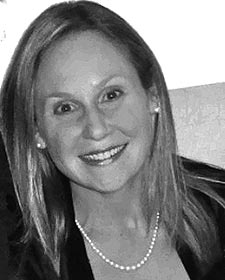
Researcher investigates a new approach to Advanced Placement teaching and learning
For most of us, high school consisted of taking copious notes while teachers stood at the front of the class and lectured. This traditional way of teaching — known as the transmission method — is now being challenged by USC Dornsife researchers.
“The transmission method of instruction is dominant in many classrooms and certainly predominant in Advanced Placement classes. And yet it may not be the best way for students to learn the sort of sophisticated thinking and communication skills they need to succeed in their college education, in their professional careers and as 21st-century citizens,” said Anna Saavedra, a research scientist at USC Dornsife’s Center for Economic and Social Research (CESR).
Saavedra leads a team of researchers at CESR and several other partnering institutions who are investigating whether the Knowledge in Action (KIA) project-based approach to teaching Advanced Placement (AP) courses in high school might improve student learning outcomes. Results from a pilot study conducted during the 2015-16 school year are promising.
KIA is designed to provide a way for students to master the AP curriculum through actively engaging in projects, with less reliance on lecture and notetaking. John Bransford, Susan Nolen and Walter Parker of the University of Washington directed the development of the KIA curriculum with support from Lucas Education Research. KIA includes curricula, instructional materials and professional development for teachers.
The KIA AP Environmental Science course provides a good example of project-based learning. In the first unit, students learn about their own ecological footprint and how the decisions that they and their family make within their homes might impact the environment. The next unit expands this thinking to the community level. The culminating activity of the final unit gives students the opportunity to attend an international global summit while proposing and debating different environmental policies.
“The KIA focus is students driving their own learning,” Saavedra said. “We’re testing to see whether compared to the business-as-usual approach to AP instruction, the KIA approach might have greater impact on students’ academic achievement, critical thinking and problem-solving skills, and interpersonal, intrapersonal and civic skills and attitudes.”

Anna Saavedra of the Center for Economic and Social Research. Photo courtesy of Anna Saavedra.
The USC Dornsife researchers are measuring these outcomes using AP exam scores, College and Work Readiness Assessment scores, and student survey results.
They are also investigating teachers’ instructional practices and beliefs, comparing teachers who do and do not use the KIA approach, and measuring students’ engagement with learning.
More engaged, deeper learning
The pilot study conducted during the 2015-16 academic year with nine teachers and their students in one large, urban district by Saavedra and her team yielded promising results in the areas of perceived student benefits, teacher enthusiasm for the KIA approach and teacher practices.
Teachers, school leaders and coaches agreed that KIA AP students were more engaged compared to AP students in prior years. They attributed the shift to KIA’s student-centered, “hands-on” approach, in which students take ownership of their learning and also learn from their peers.
Students themselves were very positive about KIA, with most reporting they felt motivated, had a meaningful experience, felt successful in their KIA class and would recommend it to other students.
“This is my favorite class I’ve ever taken just because of how everything was formatted, how everything was hands-on, the people in this class and the teacher,” one student explained.
Teachers were also positive about their experiences. All said they would encourage non-AP teachers to incorporate KIA elements in their courses, and most reported using KIA approaches in other classes. Teachers pointed to the quality and structure of the KIA professional development support they received, including access to one-on-one online coaching. They were also enthusiastic about the positive community they said the program promoted between teachers.
KIA grows up
Saavedra and her team are currently focusing on the KIA Efficacy Study, which uses a “gold standard” randomized controlled trial design to estimate the impact of the 2016-2017 use of KIA AP U.S. Government and AP Environmental Science curricula by 89 randomized teachers teaching approximately 3,500 high school students. Seventy-six schools in five major urban school districts, including Los Angeles, are involved in the study.
The primary goal of this study is to learn whether the student-centered and active-learning KIA approach to AP improves students’ academic learning, ability to transfer skills, social emotional learning and civic engagement.
Recognizing that change during the first year of instruction can be challenging for teachers, Lucas Education Research is funding a third study during the 2017-18 academic year — the KIA Maturation Study, which will also be conducted by Saavedra and her team. (Lucas Education Research is also funding the provision of KIA curricula and instructional materials and partners with the Buck Institute for Education to provide professional development support.)
“Our big question in the KIA Maturation Study is, ‘What is the impact of two years of KIA on students’ AP scores?’” Saavedra explained. “We’re also looking at differences in how teachers teach in that second year.”
According to Saavedra, teachers often find that teaching the second year can be easier and more effective than the first. “The maturation study stems from that understanding that practice takes time to improve and that teachers need support.”
Now heading up a team of 15 researchers, Saavedra says she has big hopes for how the trio of KIA studies may affect teaching and learning.
“Our findings that KIA generates high student engagement are important,” she said, “because when students engage with what they’re learning, they do better.”